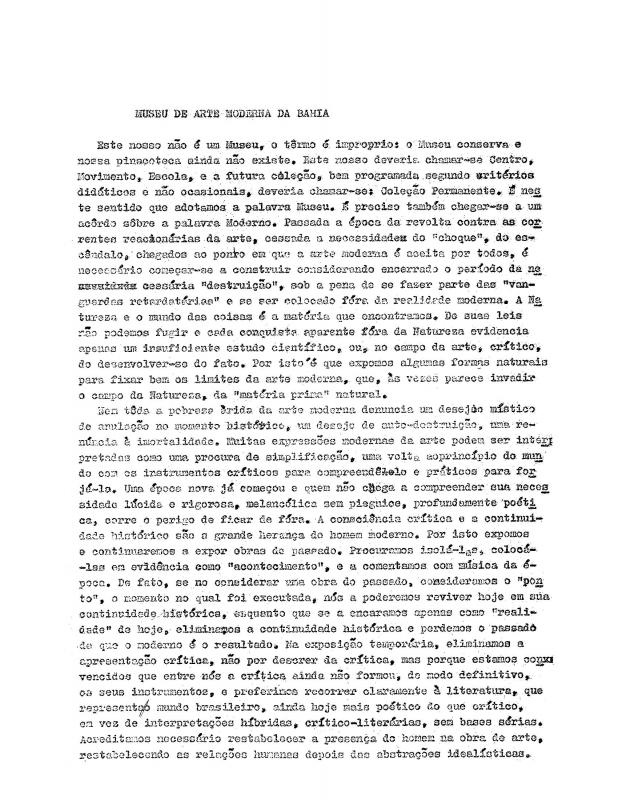In the sixties, the founder of the radical and non-commercial Cinema Novo movement, Glauber Rocha worked in Salvador, the capital of the state of Bahia; much of that state is encompassed by the aforementioned sertão. The affinity between the work of Glauber Rocha and the museographic and curatorial goals of Lina Bo Bardi, first as the founder and later as the director of the Museu de Arte Moderna da Bahia is patent; indeed, that affinity has been studied extensively. At the height of the “developmentalist” project in Brazil first undertaken in the previous decade during the administration of President Juscelino Kubitschek (1956–60), Glauber Rocha was active in the avant-garde in Bahia at a time when the debate revolved around the marginalization of culture in northeastern Brazil. The human condition of the inhabitants of the sertão was crucial to films by Glauber Rocha, such as Barravento and Deus e o diabo na terra do sol. Indeed, those films are the source of his poetics in this text.
The visual idea central to Glauber Rocha’s aesthetic is an outgrowth of something he perceives in the widespread inequalities in his country, mainly hunger. On this, see “Uma estética da fome” (doc. no. 807556), Glauber Rocha’s most widely known text that would become the manifesto of Cinema Novo.
On related projects, see the following texts by Lina Bo Bardi: “Museu de Arte Moderna da Bahia” (doc. no. 1110860); “Cinco anos entre os ‘Brancos’: o Museu de Arte Moderna da Bahia” (doc. no. 1111192); “Bahia: Museu de Arte Moderna” (doc. no. 1111193); and the aforementioned “Arte popular” (doc. no. 1110862). See also by Rocha, “MAMB não é museu: é escola e ‘movimento’ por uma arte que não seja desligada do homem” (doc. no. 1110859).






